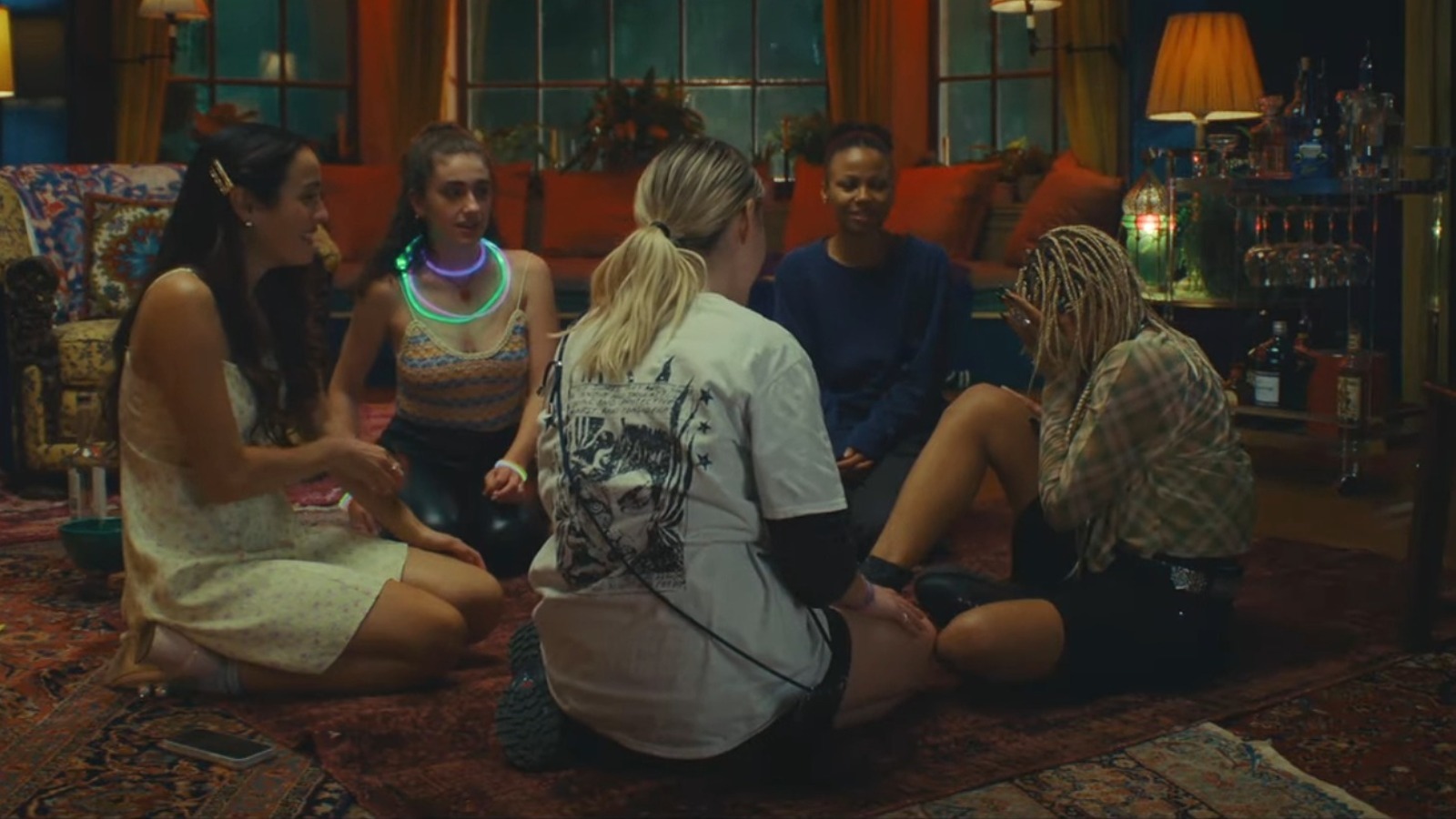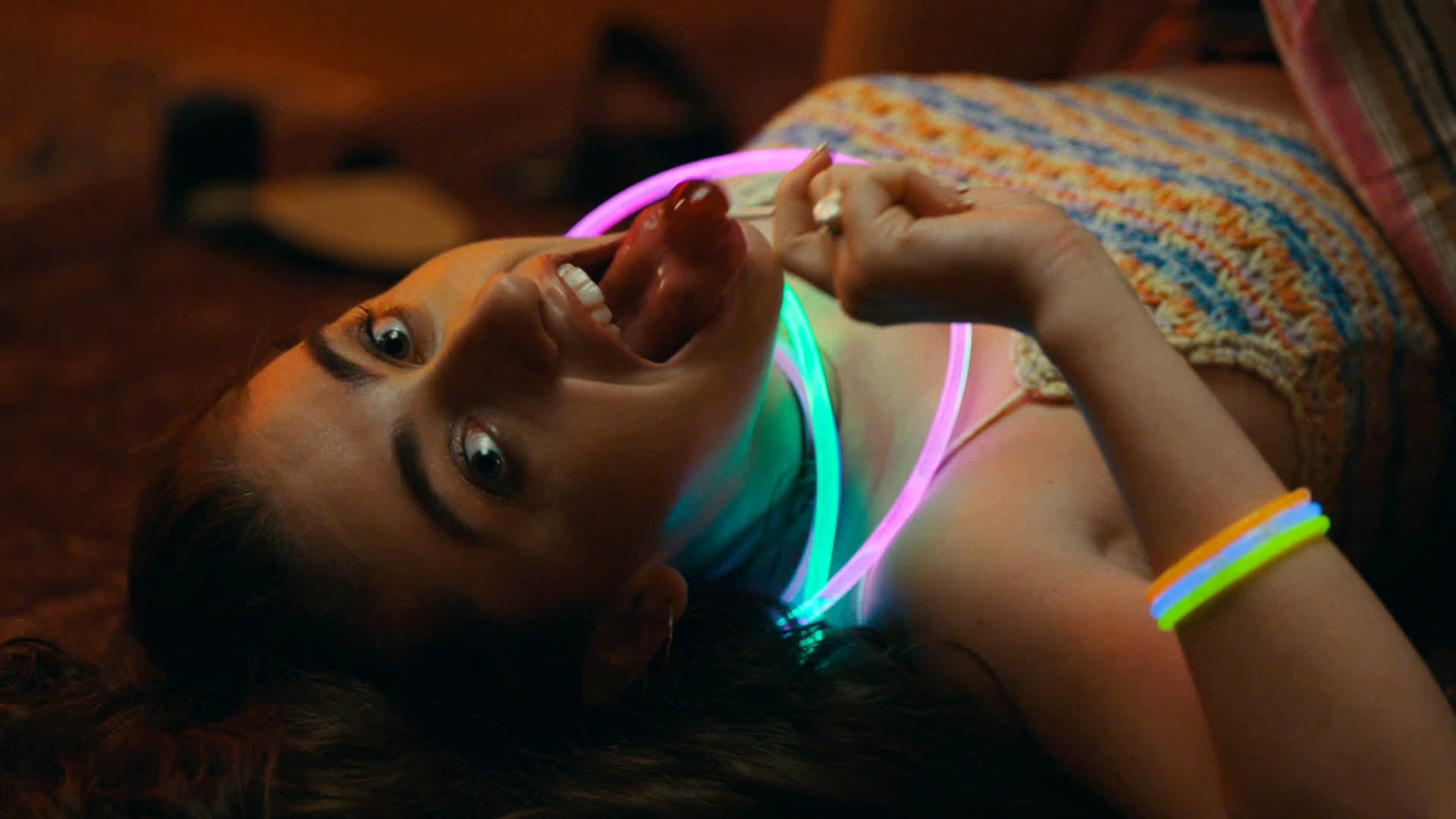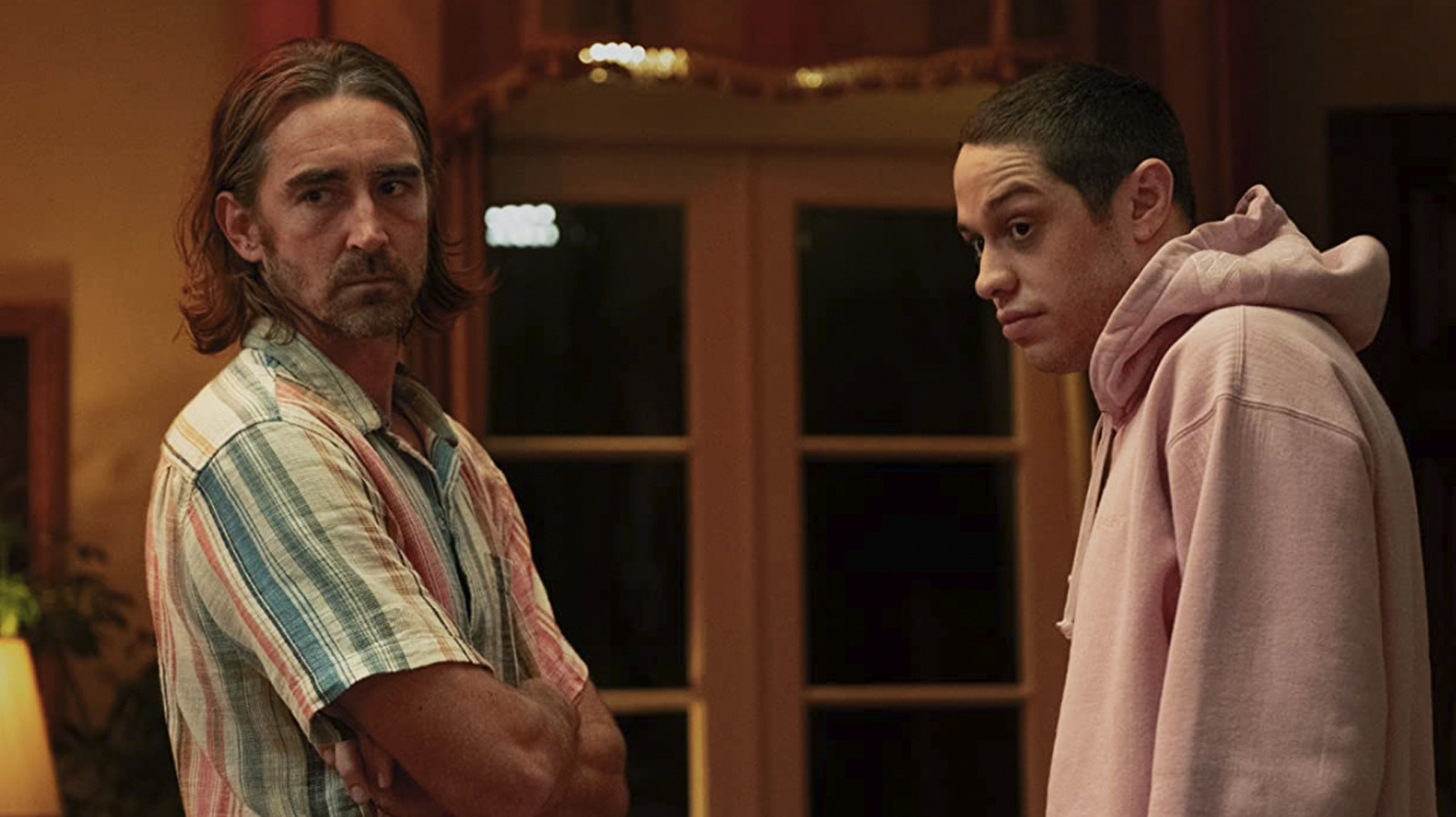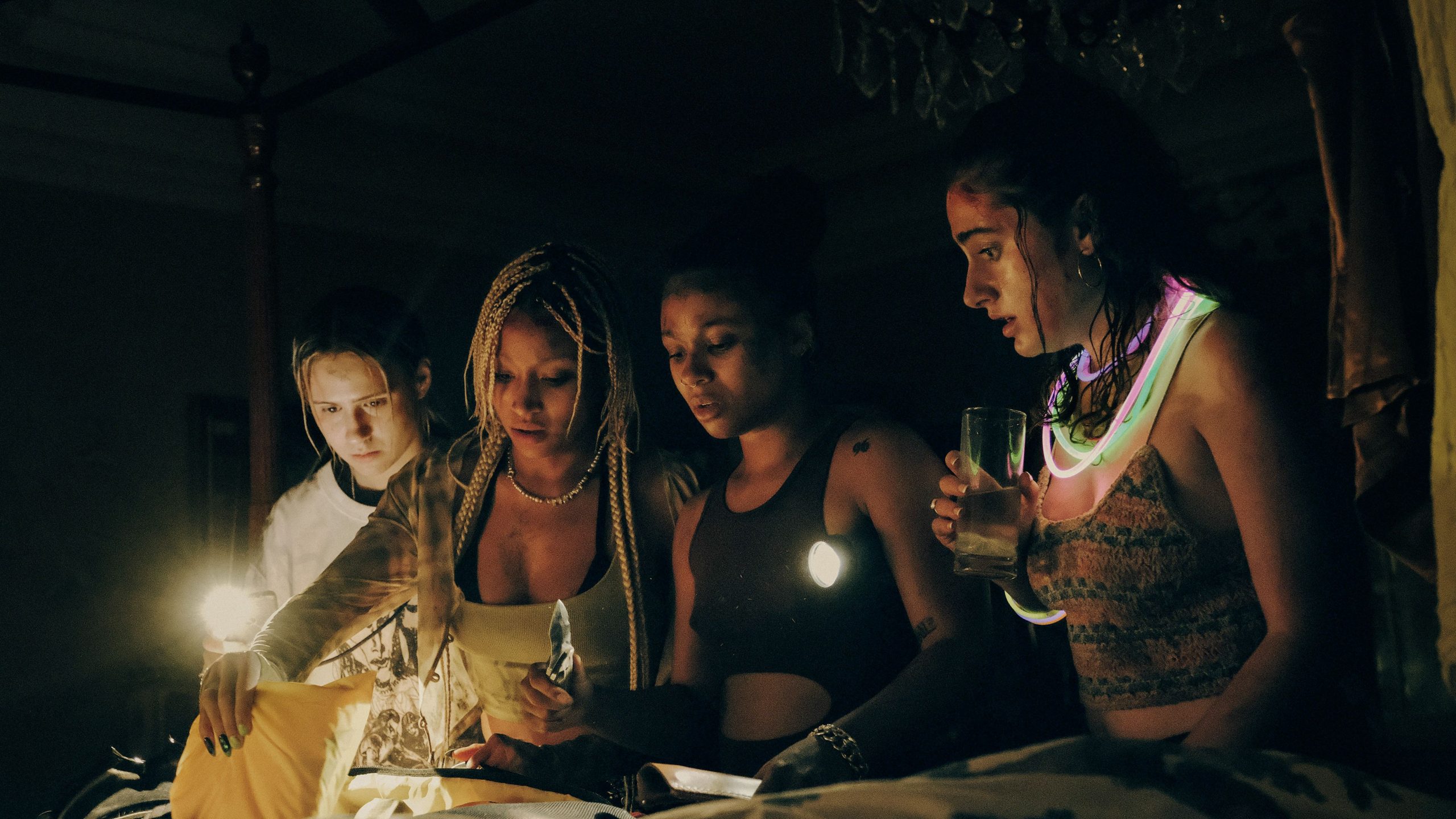Table of Contents Show
The following contains spoilers for Bodies Bodies Bodies (2022).
There is an age-old adage most horror fans know, coined by the eminent film critic Robin Wood: horror, as a genre, is inherently political. Horror films are the holding place for collective unconscious anxiety about the Other, about destruction, about infection. Where Invasion of the Body Snatchers (Siegel 1956) explored Cold War-era paranoia about the possibility of a Soviet invasion through alien invasions and Get Out (Peele 2017) delved into cultural appropriation and the suppression of black bodies, political and social issues have been an intangible aspect of the horror genre.
The latest horror flick to hit the screen, Bodies Bodies Bodies (Reijn 2022), is no different in that regard. Set in a mansion tucked away from civilization on a mountain just before an impending storm, Bodies Bodies Bodies is a horror film for the digital age, one where social media and privilege intersect. Bodies Bodies Bodies critiques the attention-starved and self-centered digital age through its ensemble cast, as they scramble for alibis after a series of untimely deaths in the film’s titular game; the rules of which encourage players to be antagonistic and self-serving.
What Happens To All Those Bodies Bodies Bodies?
When new girlfriends Bee (Maria Bakalova) and Sophie (Amandla Stenberg) head to a house party at Sophie’s friend David’s (Pete Davidson) mansion in the mountains, tensions are already running high. The audience experiences the motley group of Sophie’s rich, vapid, and horrendously self-unaware friends through outsider Bee. After an evening of drugs and drinking and partying, Sophie suggests that the group play the game bodies bodies bodies, to which Emma (Chase Sui Wonders) refuses. After the group nags her, she relents and they dive into the game. Alice’s (Rachel Sennott) much older boyfriend Greg (Lee Pace) is found “dead” first, prompting them all to start naming names for who they think the killer was.

During the second round, things take a turn for the murderous: Bee sees David, outside in the storm, bleeding out from the neck. All of the girls begin to panic, believing that someone broke into the house and killed him, so they attempt an escape, only to discover that Sophie’s car battery is dead and that they’re trapped. Sufficiently paranoid, the girls band together to find the murderer. When they confront Greg, who steals their knife in the scuffle, Bee kills him out of self-defense. As the night progresses, Emma also mysteriously dies – which Bee is blamed for. Alice and Jordan (Myha’la Herrold) kick Bee out, but Bee finds her way back in when she notices Jordan finding a gun. In a heated, contentious fight, all the girls began to confess their true feelings about one another as well as their deepest secrets.
Jordan accidentally shoots Alice in a mad dash for the gun and Jordan tells Bee that she and Sophie hooked up, taunting her to “look at the texts” before Bee pushes her off the stairs. After what seems like the longest night ever, Bee holds Sophie at gunpoint and demands to see the texts between her and Jordan. They fight over custody of the phone and accidentally pick up David’s phone, revealing that David was not actually murdered like they all assumed he was at the beginning of the night: he accidentally slit his own throat attempting to open a bottle of champagne with a sword while filming a TikTok to “Bored in the House” by Tyga. A look of horror washes over Bee and Sophie as they realize all of the murder and antagonism was for naught as the credits roll to “Hot Girl” by Charli XCX.
Little Dark Digital Age: Technology As The Killer
The digital age, and the dawn of it, have fascinated horror writers since Rod Serling’s The Twilight Zone (1959-64). More recently, the Netflix series Black Mirror (2011–), explicitly explores the dangers and terrors of the digital age in such a way that some stories in the anthology can be classified as horror. Though there aren’t any murderous robots or artificial intelligence programs in Bodies Bodies Bodies, that doesn’t make the self-centeredness of the digital age and social media any less a killer. Rejin’s film sets itself apart from other horror movies because of how an obsession with social media breeds self-centeredness, and inflated self-importance becomes the true killer.

In Bodies Bodies Bodies, social media is the initial antagonist. Gen Z’s preferred platform, TikTok, demands its users perform wilder and more extreme stunts for fifteen seconds of relevancy. The compulsion to be the center of attention causes David’s accidental death, and in turn, spirals into a night of fatal assumptions. David’s TikTok would have likely garnered a few hundred views at best since his wealth-flexing and dangerous stunts are par for the course on the app and Internet at large. The Tyga needle drop of “Bored in the House” is also a haunting reminder that the film’s carnage is catalyzed by David’s boredom and need for attention. When the Internet comes back on at the end of the film, the tension breaks; even Bee breathlessly proclaims to Max that she has service again, making the last scene a sigh of relief.

By having such a young group of actors in these roles, save for Pace’s Greg, Reijn appears to be critiquing the constant plugged-in-ness of Gen Z. Their one-liners are littered with Internet-popular lingo like “gaslighting” and “mansplaining,” they talk about followers and swiping on Tinder. Jordan begging Bee to read the texts between her and Sophie invokes the concept of “receipts” being used to prove why someone is problematic. The fact that the Internet (and therefore social media) are down the entire night while the group “solves” the murders further emphasizes their reliance on the digital world to have a good time. They lack the constant stream of stimulation that social media provides, which prompts their erratic behavior towards each other. But even then, the phones never leave their hands; they use them as flashlights while navigating the power-less house.
Despite the Internet and TikTok theoretically being an endless stream of entertainment, the ensemble cast is bored. Being constantly stimulated with pictures, posts, and podcasts makes the non-digital world blah by comparison. Up until David’s death, the group is constantly drinking and taking drugs nonstop, which does not help their paranoia and antagonism throughout the film. This isn’t to say that using social media is a precondition for substance abuse, but these rich kids are clearly using foit r the simple fact that they can. Their reliance the on mind and body-altering substances just to have a good time and exist makes their gravitation towards bodies bodies bodies even more sinister.
Bodies Bodies Bodies: The Destructive Game’s Importance
The film takes its name from the party game bodies bodies bodies, the rules of which are an apt distillation of how the ensemble cast accuses and attacks each other as they act out in self-preservation to “win” the game. Bodies Bodies Bodies is similar to Mafia, where one player is assigned the role of “murderer” and must avoid detection as they try to “kill” as many other players as possible. At the end of each round, players try to determine who the murderer was based on where and when they found the body. The game, at its core, encourages players to be irrationally combative and antagonistic with people who are supposedly their friends. Emma rightfully says in protestation before the start that someone always ends up crying because of the eventual personal and downright insulting accusations made during the game.

It’s not surprising that the privileged cast of characters gravitates towards bodies bodies bodies in the first place. They all go on the attack when they find David dead, but not because they care about finding David’s killer; it’s to avoid being killed themselves. Their affinity for a game centered around murder, accusation, and self-preservation is damning in that regard because it reveals their privilege of assuming they’re innocent and not predatory for the sole reason that they have money. The self-preservation of these rich kids against accusations that they’re the murderer – and the juxtaposition against college dropout aworking-classass girl Bee, who’s entirely innocent and only killed out of self-defense – shows that their desperation to avoid suspicion is what causes these deaths.

Alice is the perfect encapsulation of the self-preserving nature of the super-rich, especially when compared to Jordan, who desperately wants to fit in due to being “upper middle class.” Alice is a “yes-girl” who constantly switches sides depending on who holds the weapon, be it literal or verbal. By painting the rich kids as the antagonists and authors of their own destruction, Reijn quite boldly implies that their self-preserving and self-centered attitudes (encouraged by social media) are dangerous. She says that they’ll implode on themselves because of the games they find entertaining and the way they damage control to keep themselves safe from accusations – as if anyone who pries too much will find out the nefarious things they’ve done to earn their money and spend it on. They don’t want to be held accountable for the things they’ve done; they want someone else to take the blame.
But it’s not like Reijn is making up this narrative that privileged rich kids act in a self-preserving, self-serving way. Though not murderous, the College Admissions Bribery Scandal back in 2019 sent higher academics and Hollywood into a tailspin. Many children of parents who were famous, or at the very least hyper-rich, were allowed to cheat on their SAT or had sports credentials falsified in order to get them into top-tier or Ivy League schools. For rich families to act in such a way that exemplifies the privilege they have, leads them to assume a notion of “untouchability” and that they can “get away” with illicit (and outright criminal) behavior to get what they want. Given the college-age cast of characters in Bodies Bodies Bodies, it’s not too far off to wonder if one of their parents considered bribing their child’s way into college and seizing an opportunity from a more deserving student.
Murderous Conclusions In Bodies, Bodies, Bodies (2022)
Bodies Bodies Bodies openly critiques how the super-rich perceive their own privilege and act in self-preserving ways to maintain their wealth and status. Underlying their attitudes is the way Gen Z’s fixation on social media and TikTok encourages self-centeredness and the ensemble cast’s affinity for a murderous party game that invites antagonism and self-preservation. In short, this horror movie was a perfect storm where social media, the super-rich, and substance abuse intersect to end in a night full of carnage.

Where other horror movies might make underage sex, drinking, or drug use the “sin” of their characters that leads to their untimely deaths, Bodies Bodies Bodies is not the same. In 2022, the social “danger” isn’t changing attitudes about casual sex or invasion from foreign powers; the killer isn’t an alien clown trying to mow down the town losers or a murderer killing summer campers. Released in the middle of the second recession since 2000 and an inflation crisis, Bodies Bodies Bodies feels eerily on the nose with what its true killer is: the inherent self-preserving nature of the richest citizens in this country, who will do whatever they can to sustain their absurd wealth and privilege.
